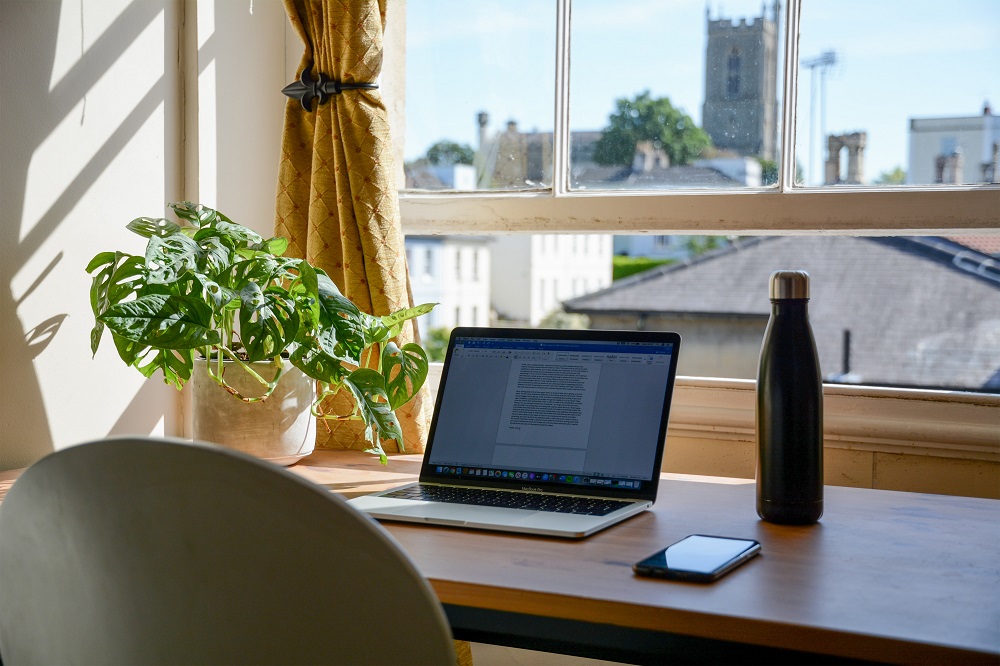 The last year has seen many of us return to some sense of normality as we got used to wearing closed-in shoes again, and returned to the office.
The last year has seen many of us return to some sense of normality as we got used to wearing closed-in shoes again, and returned to the office.
Many workplaces have seen employees eager to share a floorspace again, and it seems that the hybrid option between work and home is popular with many.
If you’ve been working from home for all or a portion of the last financial year, you owe it to yourself to be aware of what has changed when it comes to working from home tax deductions.
This time a few years back, we published a piece on what COVID-19 would mean for your taxes – feel free to revisit this piece for a bit of background.
For now, let’s focus on this financial year so you can lodge your return with the confidence that you’re playing by the rules when it comes to claiming working from home expenses.
New changes for the 2022/2023 financial year
The ATO recently announced some changes to the way you can claim your working from home expenses for this financial year.
The first big change is that the shortcut method can no longer be used. From this financial year onwards, you can only claim expenses using either the revised fixed rate method or the actual cost method.
A few more big changes were announced to the fixed rate method from 2022/2023 onwards:
The rate at which you can claim your working from home hours has increased from 52 cents an hour to 67 cents an hour.
- You no longer need to have a dedicated home office space to use the fixed rate method.
- The rate now includes phone, data, and internet usage, so you are no longer able to claim additional expenses for these items using the fixed rate method.
- You now need to keep detailed records of the actual hours you worked from home, which could be in the form of timesheets, rosters, or an annual diary. You also need to keep at least one record for each expense you are claiming included in the rate, for example a quarterly electricity or phone bill. In addition you'll need detailed records of items you wish to deduct separately, such as depreciating office equipment, which include their cost and how often you use them exclusively for work.
The actual cost method is not changing, but the ATO included a reminder stating that you can't claim a deduction for an expense that your employer has already reimbursed you for.
We'll go through both the fixed rate and actual cost methods at the end of this article, so read on for more details!
How much can I claim?

Did you know that one third of Australians are financially illiterate?
- Completed your calculations for claiming in accordance with the rules, AND
- Got the necessary proof to back up your claims should you be asked to present this.
If you’ve ticked these two boxes, then you are able to claim any amount that you’re entitled to.
What are the rules for claiming working from home expenses?
 If you’ve been working exclusively from home over the past 12 months, and you have an area within the home set aside exclusively for the purposes of work, then the good news is you may be able to claim both occupancy and running expenses.
If you’ve been working exclusively from home over the past 12 months, and you have an area within the home set aside exclusively for the purposes of work, then the good news is you may be able to claim both occupancy and running expenses.
If you regularly perform your working role outside the home (such as at the office) and have sporadically worked from home over the past year, then you’re unfortunately unable to claim occupancy expenses, even if you have a dedicated workspace in your home.
Another thing to keep in mind is that you have to have been carrying out your 'employment duties' when working form home in order to claim expenses. This means that you won't be able to claim expenses for time spent on minimal tasks, such as occasionally checking your emails or answering the phone.
"First things first, make sure you are eligible to claim working from home expenses. To claim your working from home expenses, you must be working from home to fulfil your employment duties, not just carrying out minimal tasks, such as occasionally checking emails or taking calls. Also, you must incur additional expenses as a result of working from home."
Here are some examples of working from home tax deductions you may be able to make:
- Occupancy expenses – things like your rent, mortgage interest, council rates, land taxes, and in some limited cases, home insurance premiums.
- Heating, cooling and lighting – Maintaining comfort and the ability to see what you’re doing is a non-negotiable, and is something that is usually taken care of by an employer when you’re at the office. Working from home means you can claim a portion of your home utility bills related to the time you spent in your workspace at home. You can’t claim for periods when this workspace was being used for activity other than work, nor for the remainder of your home outside your workspace.
- Home office equipment – many of us would have upped our home office game in the past year, and the good news is that for things like computers, printers and phones, you’re able to claim the full cost (for items up to $300 in value) or the decline in value for items costing over $300.
- Call costs and phone rental – Feel free to claim a portion of your bills reflecting the share of your work-related calls. This includes both landline and mobile phones.
- Home office depreciation – For furniture and fittings such as desks, shelving and cupboards, you’re able to claim deductions for the decline in value of these assets. The amount you claim should reflect the proportion of time these assets are used for work-related activity VS personal/private use.
- Depreciation of office equipment and computers – As with furniture and fittings, if you’ve bought technology items like computers this year, you can claim depreciation based on the time used for work purposes. This may include computers, laptops, tablets, smartphones and printers.
- Other work from home expenses – Don’t forget to claim the work-related proportion of other working from home costs, such as computer consumables (think printer ink/storage), stationery, phone and internet/data costs and any cleaning costs you’ve incurred.

What are the methods for claiming working from home tax expenses?
Okay, so here’s where it’s important to pay attention. We know how important it is for many to maximise their working from home tax return this year, and the method you use can make a difference.
The fixed rate method for home expenses
Using the fixed rate method, you’re able to claim a flat deduction of $0.67 for every hour worked from home. This covers things like electricity, gas, phone usage (mobile and home), internet, stationery, and computer consumables.
After claiming using the fixed rate, you can then go on to separately claim for the decline in value of assets used while working from home, such as computers and office furniture, their repair and maintenance, and cleaning costs for a dedicated home office.
As we mentioned earlier, one of the changes to the fixed rate method is that you won't need to have a dedicated home office space to be able to claim using the fixed rate method, making it much easier for many of us to access it.
- Pros – This method is less time consuming than the actual cost method, and while you'll still need accurate records it's a relatively straightforward process. If you only work from home occasionally or don't have high electricity or phone bills, then this may be the method for you.
- Cons – If you use this method you can't claim additional costs incurred from things already included in the rate. For example, if you have a high internet or phone bill, you can only claim up to the 67 cents per hour rate. Having accurate records are a must to be able to confidently claim using the fixed rate method. These include records of the hours you work from home along with records of the expenses you'd like to deduct.
The actual cost method for home expenses
The second option available is to claim the actual cost of expenses incurred while working from home this past year. It takes more time, and can be quite involved, but if you’re the type of person who keeps meticulous records, and already incurs a lot of expenses, this may be the option that could generate the highest return.
For example, for your claim on electricity used, you’d need to look at the cost of power you paid per kilowatt, then the number of hours you used working from home equipment in the last financial year. Similarly, with phone records, you’d need to itemise each call made from your bill and calculate the actual cost of calls/data used specifically for work purposes.
- Pros – If you’re already incurring large costs, and your record keeping and analytical skills are on point, then feel free to tackle this method if you have the time.
- Cons – If your records are all over the place, or your window of free time to allocate to this method is fleeting, it can be a daunting undertaking. This method could be something you wish to allocate to your tax agent.
If you’re after more information, the ATO has published complete information on claiming working from home expenses on their website.
This article is intended to provide general information of an educational nature only. Information in this article is current as at the date of publication.

